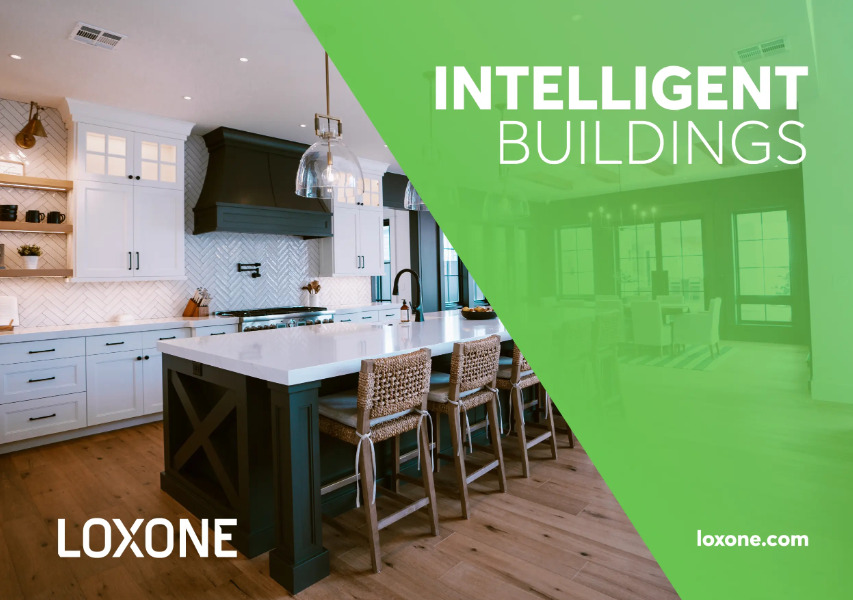
The REAL Cost of Smart Home Automation
The level of technology in our homes is increasing at an ever expanding rate. Despite this, we often reject the idea of smart home automation based on the misconception that we simply can’t afford it. But the truth is that home automation, when done right, actually SAVES a homeowner considerable money in the long run. In this article, we’ll explain how much smart home automation really costs and compare that price with traditional home technology control.
Before we dive into price comparisons, let’s explore the basics of each system.

Loxone Home Automation Systems:
Smart automation employes a consolidated and holistic approach to building technology. It integrates multiple versatile components into a single control system, providing a comprehensive solution that handles lighting, HVAC, shading, security, multi-room audio and more. A central control unit (such as the Loxone Miniserver) acts as the brain of the system, coordinating and controlling all connected devices.

Conventional Automation Systems:
Conventional home automation systems usually include a combination of devices from different manufacturers, interfaced together. They may integrate smart thermostats, lighting systems, security cameras and other components, however, each subsystem operates according to its own logic and requires separate control, which often negatively effects the efficiency and integrity of the system as a whole.
Smart Home Automation Price Comparison
Fewer devices, more functions, lower costs
Comparing the implementation of smart home automation or building automation supported by a single system with a project where multiple individual solutions have been implemented, it can be seen that as the number of functions increases, the costs in a facility equipped with a Loxone system decrease rapidly.
This means that a typical modern smart home or building with multiple technologies costs about the same as, and often even more than, a building with intelligent automation by Loxone.
This is largely due to the free software. Loxone’s smart home automation solution is comprised of 85% software and 15% hardware and that hard lean into our tech stack allows for a single control system that can be used for many different purposes. For example, if you install occupancy sensors, you can use them to intelligently control lighting as well as sound. And since you already have motion and sound control integrated into a single system, you can also transform the occupancy sensors and audio solution into a full-fledged alarm system – the list of potential cross integrations is nearly endless.

Let’s take a look at the numbers
Intelligent Control |
Traditional Control |
|
| Alarm system with presence sensors, alarm sirens and control | $0 | $850 |
| Shading with remote control | $0 | $1,800 |
| Heating control system with thermostats | $0 | $700 |
| Dimmable lighting | $0 | $475 |
| Loxone System | $3,150 | $0 |
| Total | $3,150 | $3,825 |
| At any later point, for example, you can add a versatile audio solution that fits nicely into the Loxone ecosystem. | Any further expansion of the system will involve a repeat of the entire process and much higher costs. |
Smart Home Initial Costs

Smart Home
The initial cost of smart home automation may seem relatively high due to the need to purchase a control unit and necessary components. However, with Loxone all the elements are produced in by the same company and represent the highest quality to ensure great system operation throughout the life of the building. In addition, even the most basic solution includes a wide range of functions and capabilities right from the start.




Other Systems
The initial cost of a traditional system can vary widely depending on the brand and specific equipment. While some components may offer affordable and attractive, others – with advanced features – may be more expensive. You also need to consider buying each subsystem separately from start to finish, as the components only perform one specific function.
Smart Home Installation Price




Smart Home
Smart home installation costs are likely to prove lower compared to other systems, thanks to the centralized approach. A central unit controls all the tasks performed by individual components, reducing the need for extensive wiring and the deployment of multiple control panels. What’s more, thanks to wireless technology, the system can also be based on a radio connection, virtually eliminating the need to run cables. All solutions will be integrated by a single installer, further reducing the financial outlay.




Other Systems
Installation costs for decentralized systems can be higher due to the complexity of integrating equipment from different manufacturers. Professional installation by different specialists is often required, which increases overall costs. Complex cabling is also required, which negatively impacts project cost estimates.
Smart Home Maintenance and Scalability




Smart Home
The modular design of smart home automation allows for easy expansion of the system, and software updates are free and automatic. Working with many third-party solutions, Loxone is almost infinitely scalable. In case of problems, your installer has a view of the entire system and can easily find the error (often remotely as well).




Other Systems
Maintenance costs can vary depending on the brands and equipment used in the facility. The flexibility to choose equipment from different manufacturers may allow you to expand your solutions, but this is much more costly, plus there may be compatibility issues.




Thanks to the flexibility of the Loxone system, you can scale the solution integrated into your facility at will, which means you can also spread the investment over time without any problems.
If you’re on a bit of a tight budget, you can start your automation with a basic solution that incorporates key functions such as heating, lighting, shading, security, and to some extent access.


Downloadable brochure
Discover if smart home automation is right for you! Plus learn all about Loxone’s features and capabilities.
True smart home automation
vs. standard solution
Scalability
Our lives are constantly changing, and our home along with it. We have no control over global events that affect commodity prices, or what needs we will have in a few decades. What we can do is ensure that our home can adapt to new circumstances. In a truly scalable solution, you can easily add more features to support your life. Since the entire system is integrated, long term costs are greatly reduced.
Isolated solutions cost more, and usually involve extensive renovation.
Compatibility
= efficiency
Appliances that work together are the definition of efficiency, which translates into seamless operation of our homes – as well as more cash in our pockets. Our own energy is put to good use and its consumption can be regulated according to current production and market prices.
True energy efficiency only happens when all these elements work together in an automated way.
More time for what matters
Loxone smart home automation removed dozens of menial tasks from daily life, giving you more time to spend on what really matters. Instead of constantly and frustratingly adjusting the temperature, opening the windows when the heaters are running at full blast, or turning back home to make sure all the lights are off, you can trust that Loxone is on top, saving you time, money, and worry!
Let's talk about your project!
We are happy to help you plan your next project and show you the cost cutting and guest experience enhancing possibilities available with Loxone. Just leave us your contact details and we will be happy to get back to you.
The Loxone Advantage


No charge, no obligation
Our consultations are free of charge and there is no obligation to do anything after the chat.


Consult directly with the manufacturer
Talk to one of our Loxone Experts and get advice directly from the manufacturer.


Call us from anywhere at your convenience
Our consultations are conducted by phone, so you don't have to carve out a lot of time.


